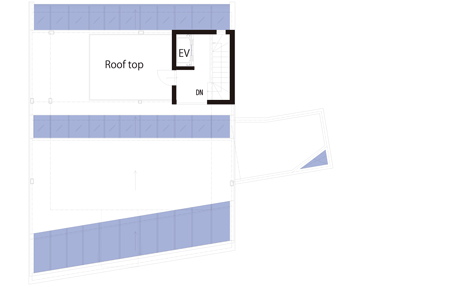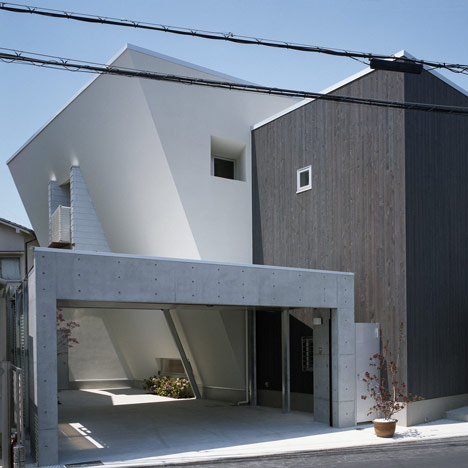
Shigita House by Masato Sekiya
Japanese architect Masato Sekiya has completed a house in Osaka with a sloping wall that looks like it’s toppling over.
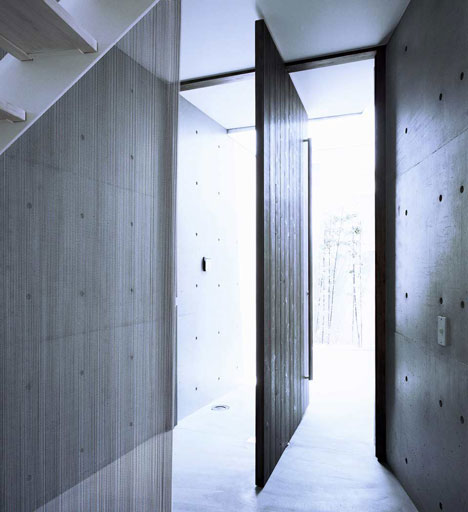
The two-storey Shigita House is partly constructed from reinforced concrete and partly from wood.
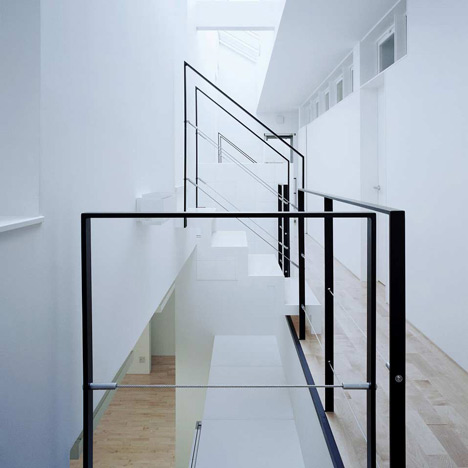
A revolving door leads into the house, where sloping bookshelves lean against the angled wall of the ground floor living room.
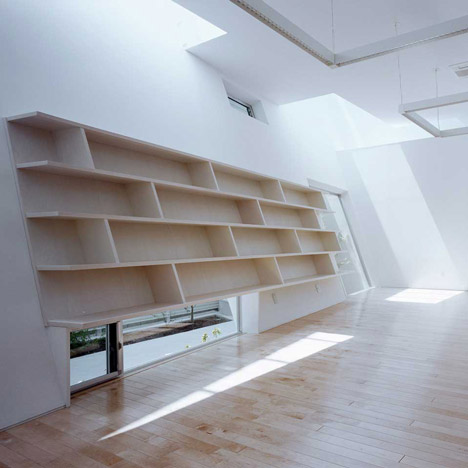
One of the house’s four bedrooms is suspended above this room, but a gap between the walls allows natural light down from skylights above.
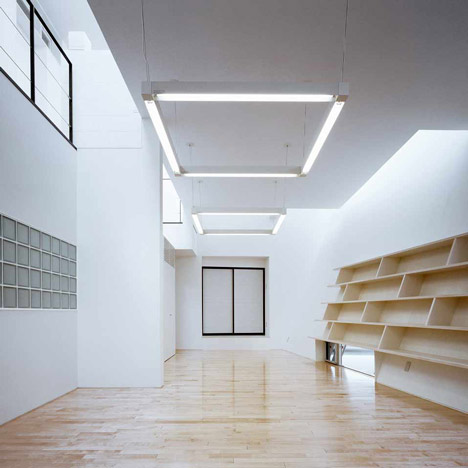
Both a staircase and a lift connect the two floors with an enclosed terrace on the roof.
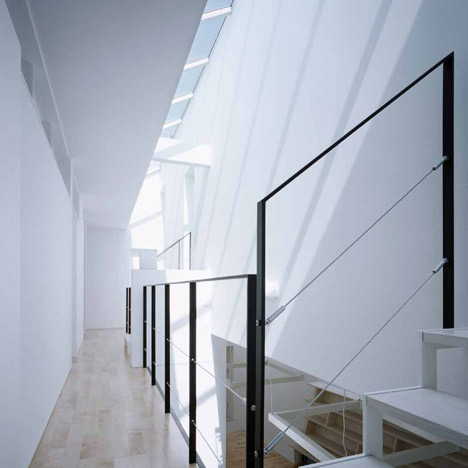
Masato Sekiya, also known as Planet Creations, has designed a few buildings that we've featured on Dezeen - see all our stories about the architect here.
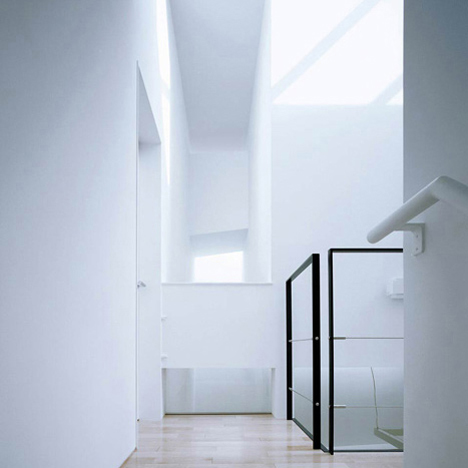
Photography is by Akira Kita.
Here's some more information from Masato Sekiya:
Shigita House
It is located in Osaka Prefecture, in Higashi Osaka City
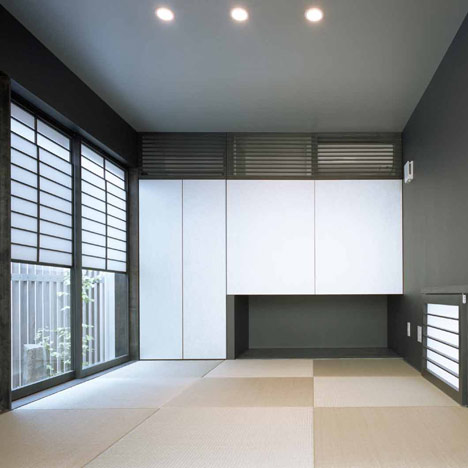
Concept: In a highly built-up area, closed in on all sides, this house offers both privacy and light.

Such a paradox is made possible by the structure's 'tunnels of light'.

Standing in the center of a densely populated area in East Osaka. The windows reach from the buffer zone through to the outside from the inner house.
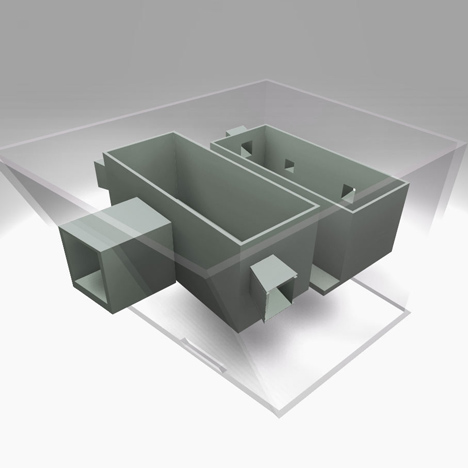
Lighted up, the diagonally positioned outer wall seems emphasized. The inside is nearly invisible from outside. There are few windows, and the interior cannot be seen from outside. The wall on the right side of the car park area is unfinished RC. The vertical portion of the construction is made of painted inflammable wooden material. The white surface is spray painted. The entrance door revolves on a vertical central axis.
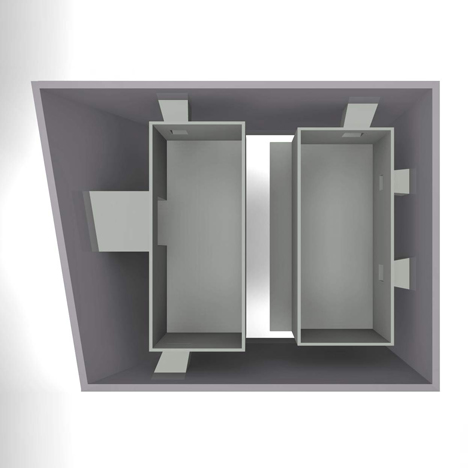
The living room is toplit as natural light enters between the diagonal outside wall and the inside vertical surface. The shelves in the living room were designed to follow the diagonal of the wall.
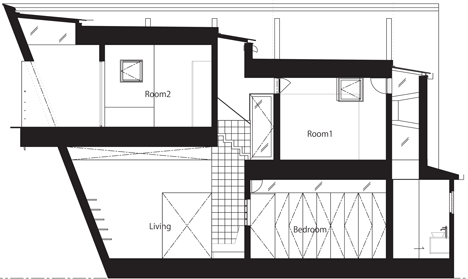
The second floor bedroom floats to allow an influx of light from above to penetrate to the living/dining room below.
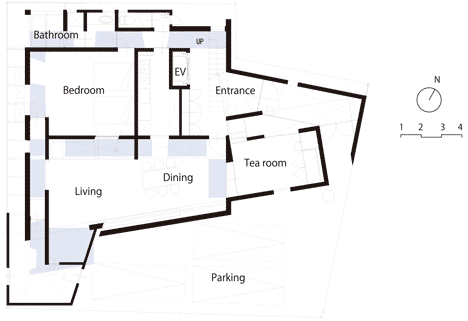
Between the north wall and the inner chamber is a passage for movement to the bathroom facilities. The toplight makes this a bright and comfortable space.
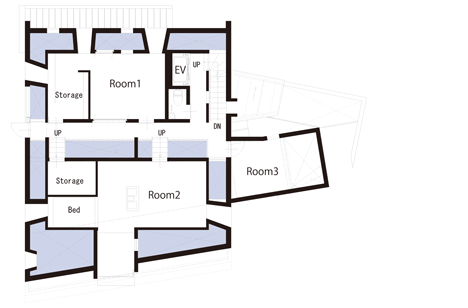
The tatami room is designed contrastingly in black and silver.
